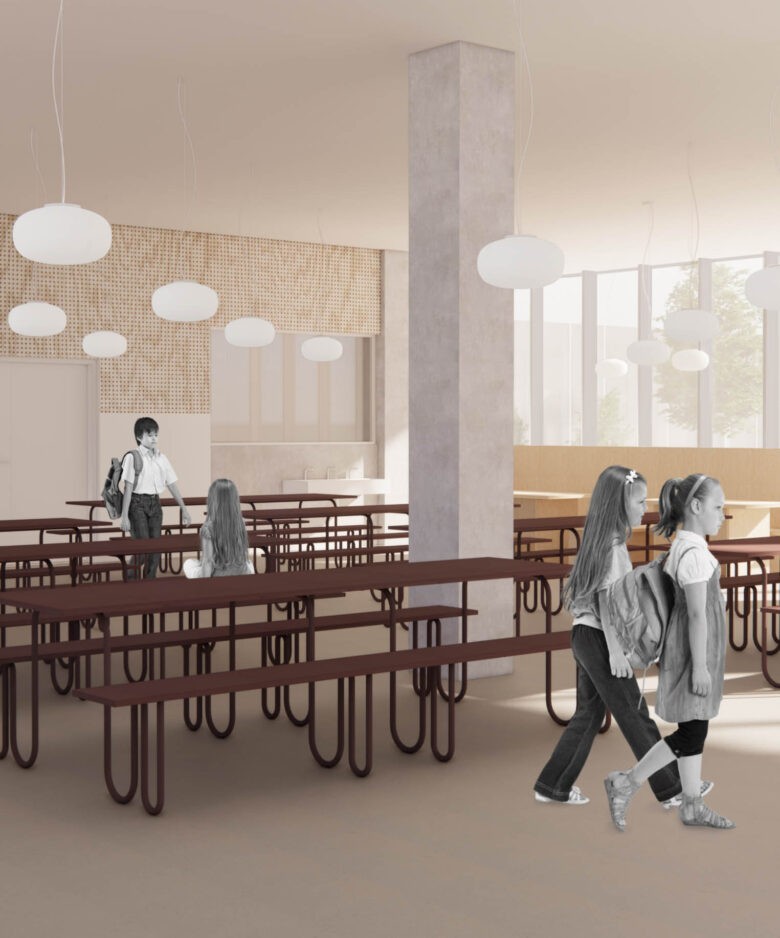Frederiksberg Gymnasium
With a focus on creativity, and freedom, we have created spaces for the students at Frederiksberg Gymnasium. Here, they can work on projects as well as relax between lessons in an area that is completely their own. The most important design factor was to make sure that the ‘pocket’ felt more homey than an educational institution.
Frederiksberg Gymnasium’s building is designed with large corridors, each of which houses small ‘pocket areas’ intended for the students. Our task was to design the areas in a way that invites the students to be social as well as giving them a space that can be used for group work. But most importantly, the design had to make sure that the students felt that these spaces were their own.
The building itself is very minimal in its design; colder materials and practical surfaces are some of the things that characterize the place. From the get-go, we chose to separate the student pockets from the building and the educational institution, as they wanted to create spaces that felt almost like home for the students. A key word in the choice of furniture, colors, and materials is diversity, making the interior feel more alive and more individual.
Bridging leisure time and school hours
We decided to select furniture with variety as a value, as it is precisely the eclectic expression that makes the student spaces different from the architecture of the house. The varied arrangement also invites the students to move the furniture around themselves and use it as they wish. This adds a bit of ‘clutter’ visually, which helps to ensure that the design and atmosphere of the pockets bridge the fun of leisure time and school.
For the same reason, official school communication is banned from the students’ spaces, and the walls are decorated with panels of blackboard lacquer, where students can write messages to each other, and mirror foil.
Durability and Innovation
The students’ carefree use of furniture naturally calls for very durable materials, and at the same time, the interior design reveals a sharp focus on durability and innovative thinking. We have selected tabletops in Really – a material created from compressed textiles that would otherwise not be able to be recycled. Along the same line of thinking, the stools are made from recycled plastic, while other furniture is labeled with Nordic Ecolabel or made from FSC-certified wood.
The result is pockets where the big sofas are especially in demand; even more, sofas have already been bought because the students love to hang out on them. In this way, we have succeeded in creating spaces that the students experience as their own.


















